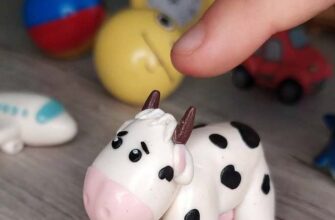Polymer clay is a versatile and popular medium that offers artists and crafters the ability to create a wide range of projects, from jewelry and sculptures to decorative items and accessories. A common question that arises is whether a roller is necessary when working with polymer clay. In this article, we’ll explore the role of a roller in polymer clay crafting, its benefits, and alternative techniques for achieving desired results.
The Role of a Roller
A roller, also known as a clay roller or a pasta machine, is a tool commonly used in polymer clay crafting. It consists of two parallel rollers that can be adjusted to various thickness settings. The primary purpose of a roller is to flatten and condition polymer clay to a consistent thickness, making it easier to work with and ensuring uniform results in your projects.
Benefits of Using a Roller
Using a roller when working with polymer clay offers several benefits:
- Conditioning: Polymer clay often comes in blocks that need to be conditioned or kneaded before use. A roller helps soften the clay, making it more pliable and easier to shape.
- Consistent Thickness: Achieving a consistent thickness is essential for even baking and professional-looking results. A roller allows you to control the thickness of the clay and ensures uniformity in your creations.
- Texture and Effects: A roller can be used to impress textures, patterns, or designs onto the surface of the clay, adding visual interest and dimension to your projects.
- Efficiency: Using a roller speeds up the process of flattening and shaping polymer clay, allowing you to work more efficiently and dedicate more time to the creative aspects of your project.
Alternatives to a Roller
While a roller is a valuable tool, there are alternative techniques you can use when working with polymer clay:
- Hand Conditioning: If you don’t have a roller, you can condition polymer clay by kneading it thoroughly with your hands. This process may take longer than using a roller but can be effective in achieving a pliable and uniform consistency.
- Rolling Pin: A traditional rolling pin, whether small or large, can be used to flatten polymer clay to the desired thickness. Place spacers on either side of the clay to ensure even thickness.
- Texture Sheets and Tools: Instead of using a roller to add textures, you can press texture sheets, stamps, or various objects onto the clay to create patterns and designs.
Conclusion
While a roller is a useful tool that offers efficiency and precision when working with polymer clay, it is not absolutely necessary for all projects. Beginners and experienced artists alike can achieve beautiful results using alternative techniques, such as hand conditioning, rolling pins, and texture tools. Whether you choose to invest in a roller or explore other methods, the key is to ensure that your polymer clay is properly conditioned, flattened to a consistent thickness, and ready to be shaped into your creative vision.

